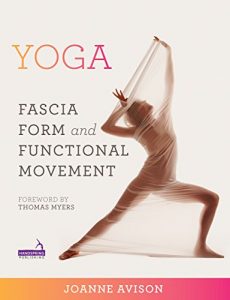 Fascia, it seems, is the new buzz word. Anatomy of the millennial generation. But thats not without reason, as through scientific, anatomical and ultimately practical enquiry, we learn more about this neglected aspect of our make up.
Fascia, it seems, is the new buzz word. Anatomy of the millennial generation. But thats not without reason, as through scientific, anatomical and ultimately practical enquiry, we learn more about this neglected aspect of our make up.
There is, it seems, an awful lot to learn, seldom a month goes by without another insight on the professional networks. As some readers will know, I’ve spent a bit of time working in dissection labs handling fascia myself, and seeing some of the new understandings being explored and tested. Make no mistake this is the frontier (I would like to say bleeding edge, but its wrong on so many levels) of anatomy. So much so that, to a degree, some parts of the medical world and some body workers are at risk of being left behind in their understanding of the human form.
What is fascia? Well thats an article in its own right, but briefly the connective wrapping in the body, beneath the skin, around the organs, around the bones, inside muscles, sometimes likened to a shrink wrapping. Historically it is the tissue disregarded in exploring elsewhere, but increasing we are learning of its importance as both an organ of form, and an organ of sensing and communication.
However, there is nothing new under the sun, and although the discoveries are coming through thick and fast, its not new technology – the human form has been with us for a while I think – just intelligent and nuanced reinterpretation.
Into this fast moving world comes this book, published in early 2015, making it a comparatively new “anatomy” book – the inverted commas as its a very different approach to the subject.
The opening part of the book is an introduction to fascia and a deconstruction of traditional approaches to anatomy, from a very strong non reductionist perspective – although the author is not alone in that approach and it was familiar territory to me at least. Its hard going and in places technical – thats the nature of the topic. Towards the end of the first section the author writes,
“I was left wondering what could actually make a difference to my classes and give the teachers and students that I work with something that makes sense for them.”
I can relate to that. For me my anatomy studies – from personal preference, more in depth than many yoga teachers may do – have led to a paradox “the more I learn, the less I feel is relevant to share” – purely because you learn bodies do not comply to neat illustrations from Grays or cookie cutter forms, and in a movement based practice shows you infinite variation which may not be best served by precise alignment or body discipline regimes. For example – my feet turnout. Why? Does it matter? Should I try and correct the turnout? Discuss, with reasons (and good luck with a cohesive answer).
In parts two and three the book picks up pace looking more practically at how our comparatively new understandings of fascia influences our movement and by extension yoga practice, “animating the instinctive body, applying the new paradigm” in the authors words. Surprise, we come back to some old practices – hello Pawanmuktasana, old friend.
There are some useful thoughts here on posture profiling and appropriateness of teaching, not necessarily new, but always relevant and worth of reconsideration.
In short this is not an easy book; its a technical work for yoga teachers or curious and experienced yogis, but it is a good introduction to this complex world, and for that worth it. For those who stick with the detail in the first part, its a rewarding read, and a very good introduction to this new way of approaching understanding our human form.
The book is available on amazon (Yinspire earn a small commission using this link)
